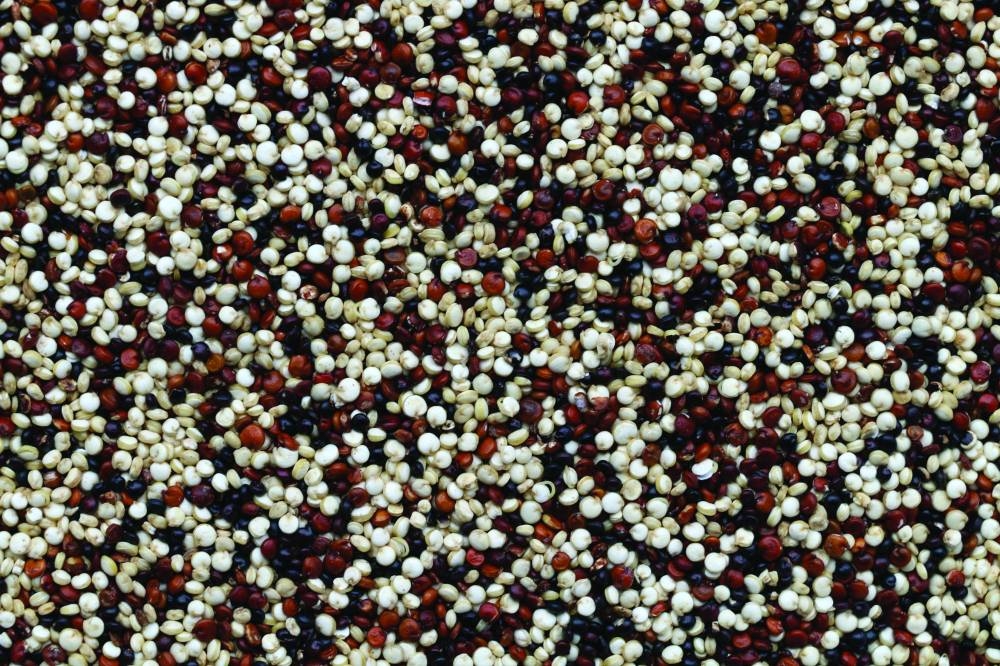Quinoa is a highly nutritious plant that has been cultivated in the Andean region of South America for thousands of years. It is known as a "superfood" due to its high nutritional value and has gained popularity worldwide in recent years.
The plant is believed to have originated in the Peruvian and Bolivian Andes and was a staple food for the Andean cultures of South America. The earliest evidence of quinoa cultivation dates to between 3,000 and 5,000 years ago, in the current lands near Lake Titicaca, Puno.
During the Inca Empire (15th and 16th centuries) and in the Andean cultures prior to the Inca, quinoa was consumed in various ways. The Andean peoples had developed a quinoa variety that was resistant to wet and dry weather, and it was consumed as soups, flour, or granulated. In the Quechua language, quinoa is known as "chisiya," which means "mother grain," despite being small in size.
Today, quinoa's nutritional benefits are internationally recognised. The Food and Agriculture Organisation of the United Nations (FAO) has called it the "golden grain of the Andes" and declared 2013 the "International Year of Quinoa" to recognise its importance. Quinoa is rich in protein, fiber, and bioactive compounds, and it contains all the essential amino acids, making it a complete protein source. Compared to traditional cereal grains such as corn, oats, wheat, and rice, quinoa has a higher biological value, which means that it provides more usable protein per unit of food.
Quinoa is also rich in carbohydrates, but it produces low glycemic indexes, which means that it does not cause a rapid increase in blood sugar levels. This makes it a better nutritional and functional choice for people with diabetes or those who are looking to manage their blood sugar levels.
Quinoa is a versatile grain and is consumed in various forms, such as salads, stews, or as a side dish. It comes in different presentations, such as white, red, and black quinoa, and each variety has its own unique flavour and texture. Quinoa is gluten-free and cholesterol-free, making it an excellent choice for people with celiac disease or those who want to maintain a healthy cholesterol level.
Its preparation is straightforward, as is traditionally done with rice, Peru and Bolivia are the largest producers of quinoa, and its cultivation has a great advantage over other products because it has a great adaptation quality. It can even be cultivated in desert lands, with hot and dry climates, with humidity from 40% to 80%, and it can resist temperatures from -4 degrees to 38 degrees Celsius.
It is worth emphasising that ancient Peruvians domesticated and classified authentic quinoa, knowing its great nutritional benefit. The Puno region, the birthplace of the Inca Empire, is still one of the regions that produce high-quality quinoa, with 10 types of this grain. The National Aeronautics and Space Administration has described quinoa as a perfect food because it is nutrient-dense and has a long shelf life.
In conclusion, quinoa is a unique and remarkable crop that has played a significant role in Andean culture and cuisine for thousands of years. Its impressive nutritional profile and versatility make it an ideal food for people who are looking for a healthy and tasty alternative to traditional cereals. Quinoa is a crop that deserves attention and recognition for its cultural significance and nutritional value.
At present, quinoa has established itself in the world market as a necessary grain for proper nutrition.
The Peruvian superfood is available in all colours in the markets of our host country, Qatar.

Quinoa known as a "superfood" due to its high nutritional value and has gained popularity worldwide in recent years.
